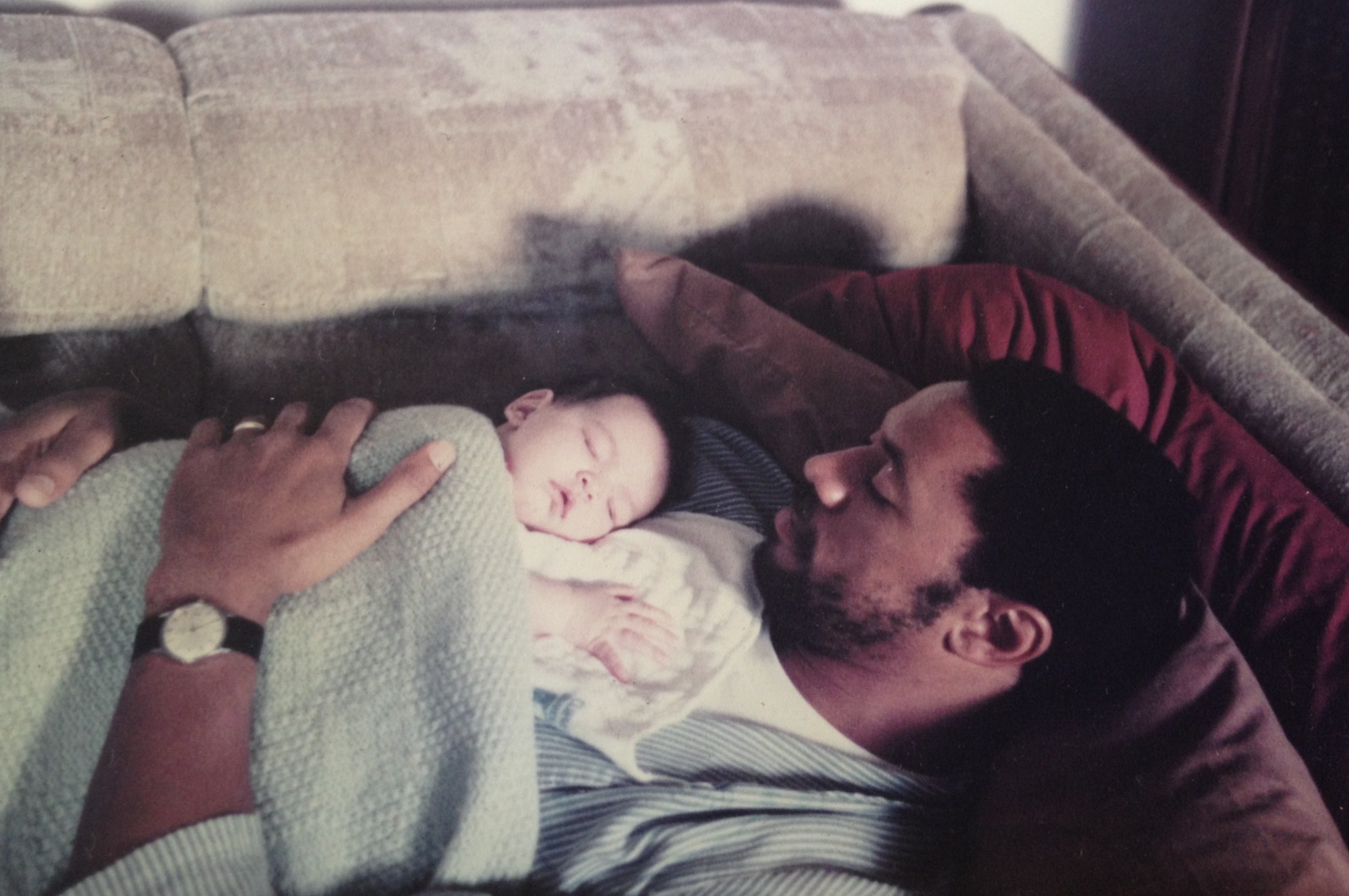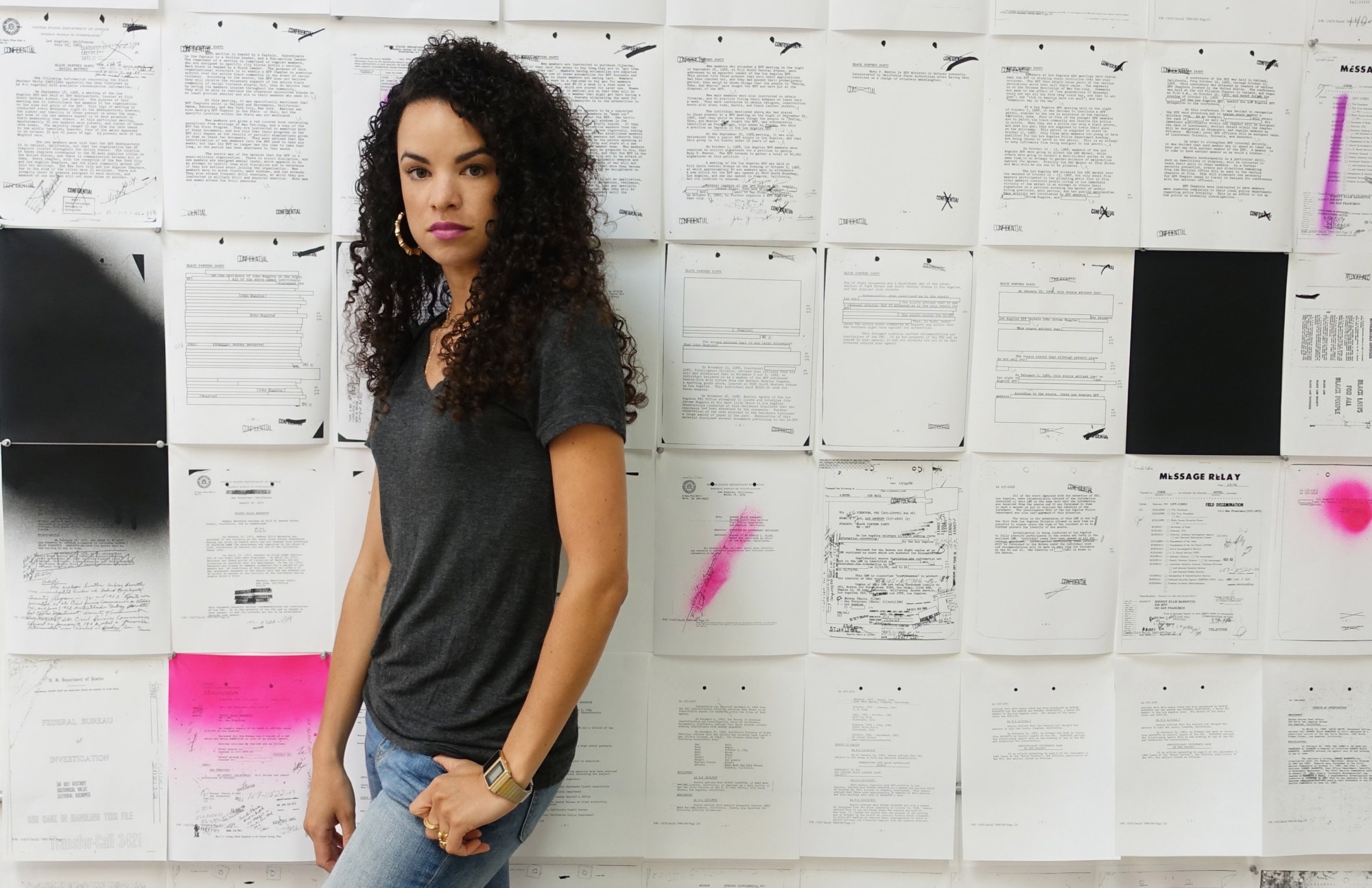When it comes to engaging with activists, the government is shady as hell. Despite the public’s legal right to peacefully assemble, doing so often comes with an onslaught of unjust consequences. Many elected officials have shown immense disdain for the Black Lives Matter movement, spreading false information. And just months ago we witnessed the unsettling treatment of peaceful Standing Rock protestors being beaten bloody. Unfortunately, this is par for the course in US history. Just look at the story of the Black Panther Party. Founded in October 1966, the Black Panthers radically changed the tone in the fight of African Americans for better, equal lives. The party shook America’s racist political system to its core, despite every effort by J Edgar Hoover’s COINTERLPRO to discredit and persecute its members.

Oakland-based artist Sadie Barnette’s work explores the covert government tactics used to “neutralize” the Black Panther Party, and offers up a very personal father-daughter conversation. Two years after spending time in the Studio Museum’s artist residency program in Harlem, Barnette has now returned to New York with her installation Do Not Destroy. The exhibition is an extension of her current work showing in the Oakland Museum exhibition All Power to the People: Black Panthers at 50. It features the 500-page FBI surveillance file on Sadie’s father, Rodney Barnette, who founded the Compton chapter of the Panthers. In Sadie’s first solo New York show, she breaks up the severity of these documents with unabashed “girldom.” Pink spray paint, glitter, and other girlish details juxtapose officious markings and eerie intelligence notes.
We caught up with Barnette before her opening to discuss how she’s reclaiming her father’s story and why the political is personal.
Your work explores the federal investigation into your father, who was a community organizer and Black Panther activist. What made you decide to turn his case file into art?
My father requested these files about four years ago because he wanted to learn more about the surveillance and harassment that he was undergoing at the time. As soon as we talked about him requesting the files, I knew it would be important for me to incorporate this material into my art practice. The Oakland Museum show was the perfect occasion for me to display this work for the first time because the exhibition provides so much necessary historical context and offers a complex and nuanced portrait of the Black Panthers.

What did combing through so much information about your dad and your family feel like?
The main thing I felt after reading through the hundreds of pages was very lucky that my dad was not murdered or thrown in jail like so many other activists. COINTELPRO — J. Edgar Hoover’s counter-intelligence program — was intent on destroying the Black Panther Party and destroyed many lives along the way.
Tell me more about your solo show’s title, Do Not Destroy.
The words come from text that is stamped on the first page of the FBI file on my dad. The full stamp reads, “Historical Value—Do Not Destroy.” The literal meaning relates to the archive and this material as evidence. But the subtext is also a battle cry and an assertion that we the people will not be destroyed.

How do you feel about the current state of activism, compared to activism of the past?
Many things about the way our society functions today are very different. The problems are the same, but the world is different… so organizing has to look different. If you look at the Black Panthers’ 10-point program, every single thing on that list is just as much an issue today as it was then, if not more. A lot of the reasons it’s so hard to organize people today are direct results of the government silencing the Black Power movement through overt and covert means, from the introduction of crack cocaine to mass incarceration and the glorification of individual success.
Do you consider yourself an activist?
I consider myself a researcher. I think people need art and poetry in order to imagine a better world. I’ve been honored to work in an artistic capacity with Black Lives Matter L.A.

Your father played a major role in your recent work. Were there any women that also inspired you?
Many pages in the FBI file pertain to the work my dad was doing with the National Committee to Free Angela Davis. Men and women all over the world fought for her freedom and were inspired by her fearless actions and brilliant writing, as we still are today.
In this show, you incorporated traditionally feminine touches — pink paint and rhinestones. Was that an act of reclamation or feminism?
It is an act of reclaiming the files by putting my mark on their surfaces. I used spray paint because it references graffiti and gestures of the hip-hop generation. I chose pink to carry my voice in this father-daughter narrative and because it is a visual disruption to the black-and-white typewritten and carbon copy bureaucratic pages.

In 2017, what do you consider a courageous act to be?
A courageous act is doing anything that you’re afraid of.
Sadie Barnette’s “Do Not Destroy” is on view from January 18 to February 18, 2017 at Baxter Street at CCNY.
Credits
Text Marquita Harris
Images courtesy Sadie Barnette
